COVID-19: TCTMD’s Dispatch for January Week 4
We’re curating a list of COVID-19 research and other useful content, and updating it regularly.
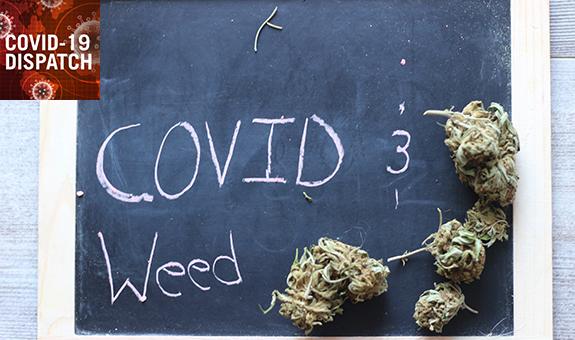
Since March 2020, TCTMD reporter Todd Neale has been writing up breaking news and peer-reviewed research related to COVID-19 every weekday. In July 2021, we transitioned to Mondays, Wednesdays, and Fridays. If you have something to share, tell us. All of our COVID-19 coverage can be found on our COVID-19 Hub.
January 28, 2022
New Zealand, a country long hailed for its handling of COVID-19, has been placed under the highest level of restrictions to date, including a cap on events of more than 100 people, leading Prime Minister Jacinda Ardern to cancel her own wedding. But the small nation remains a pandemic paragon. As the BBC reports, New Zealand has reported just 15,104 COVID-19 cases and 52 deaths.
In the United Kingdom, England has lifted its “Plan B” restrictions as the Omicron surge ebbs. Add to that the last few days of “dry January” and English pubs are hoping to see a surge of a different kind, the Guardian reports.
In Canada, a “freedom” convoy of long-haul truckers that spent the week driving across Canada is converging on the nation’s capital ahead of a weekend rally ostensibly to protest vaccine mandates. Both the US and Canada have imposed mandatory vaccines for big-rig drivers who cross back and forth over the border. A number of far-right and white supremacist groups have “latched onto the protest,” the Globe and Mail notes, leading the hashtag #FluTruxClan to trend on Twitter yesterday. “The Canadian Trucking Alliance has disavowed the protest and said more than 85% of truckers are vaccinated. Many truckers have also posted on social media they continue to do their jobs and that the convoy doesn’t speak for them.”
 Hong Kong is offering to compensate pet stores after health officials ordered a citywide hamster cull. As Reuters reports, “Last week, Hong Kong authorities enraged pet lovers with an order to cull more than 2,200 hamsters after tracing an outbreak to a worker in a shop where 11 hamsters tested positive.”
Hong Kong is offering to compensate pet stores after health officials ordered a citywide hamster cull. As Reuters reports, “Last week, Hong Kong authorities enraged pet lovers with an order to cull more than 2,200 hamsters after tracing an outbreak to a worker in a shop where 11 hamsters tested positive.”
In the United States, hospitalizations are gradually leveling off, but five states are conspicuous standouts. As Becker’s Hospital Review summarizes from a range of different sources, Arkansas, West Virginia, Utah, North Carolina, and Oregon are posting some new highs. The Oregon numbers are particularly worrisome because it is hospitalizations for children that broke the previous records.
In JAMA Network Open, researchers using saliva samples from 50 subjects successfully detected COVID-19 in 20 patients using a smartphone-based loop-mediated isothermal amplification assay and ruled out infection in an additional 30 subjects. The smartphone camera is used to identify color changes on the LAMP test, indicating a chemical reaction. “This platform also met the CDC criterion standard for detection of clinically similar influenza A and B viruses in spiked saliva samples (n = 20), and in saliva samples from hospitalized patients (50 of 50 negative),” the authors write, noting that the smartphone-based LAMP assay was rapid (taking just 25 minutes), sensitive, low-cost (less than $7/test), and scalable (testing 96 samples per phone).
In the New England Journal of Medicine, researchers report that both homologous and heterologous booster vaccines using the three products authorized for use in the United States “had an acceptable safety profile and were immunogenic in adults who had completed a primary COVID-19 vaccine regimen at least 12 weeks earlier.” However, the increase in both binding and neutralizing antibodies from prebooster levels was “similar or greater” after heterologous boosting than after homologous boosting.
 A nationwide study from Denmark looking at 37,522 children ages 0 to 17 years with prior COVID-19 confirmed by a PCR test has found that symptoms lasting more than 4 weeks were common but typically mild. The most frequently seen symptoms were fatigue, loss of smell and taste, dizziness, muscle weakness, chest pain, and respiratory problems, but in the vast majority, symptoms resolved within 1 to 5 months. “Despite the high prevalence (12% to 51%) of reported long-lasting symptoms in the SARS-CoV-2 children, the true prevalence of ‘long COVID’ seems a lot lower, maybe as low as 0.8%,” the authors conclude in the European Journal of Pediatrics.
A nationwide study from Denmark looking at 37,522 children ages 0 to 17 years with prior COVID-19 confirmed by a PCR test has found that symptoms lasting more than 4 weeks were common but typically mild. The most frequently seen symptoms were fatigue, loss of smell and taste, dizziness, muscle weakness, chest pain, and respiratory problems, but in the vast majority, symptoms resolved within 1 to 5 months. “Despite the high prevalence (12% to 51%) of reported long-lasting symptoms in the SARS-CoV-2 children, the true prevalence of ‘long COVID’ seems a lot lower, maybe as low as 0.8%,” the authors conclude in the European Journal of Pediatrics.
From the outset of the pandemic, scientists have struggled to understand why some people get so sick from SARS-CoV-2 and others fare much better. Now, an expedited review article published to Nature online explores some of the human genetic and immunological determinants that might be at play in causing critical COVID-19 pneumonia. According to the authors, at least 15% of critical cases may be explained by specific inborn errors of type I interferon, known to stimulate antiviral genes to prevent virus replication, and preexisting autoantibodies. “In ways that can depend on age and sex, insufficient type I IFN immunity in the respiratory tract during the first few days of infection may account for the spread of the virus, leading to pulmonary and systemic inflammation,” the authors propose.
Also in Nature, a news feature explores Omicron’s origins and the race to understand how its many and unusual mutations evolved, free of some “transparent path of transmission linking Omicron to its predecessors.”
Meanwhile, researchers writing in Nature Communications describe an “immunoglobulin signature” that might help explain the risk of long COVID, also known as postacute coronavirus disease 2019 (COVID-19) syndrome (PACS). As a BMJ news story explains, more than half of the 175 patients with COVID-19 reported long COVID symptoms lasting longer than a month and those who did were found to have lower levels of IgM and IgG3 antibodies than those who recovered without lasting symptoms. “We urgently need to scale up research on how to prevent this happening,” Claire Steves, PhD, is quoted. “Tools such as these predictive models could be used to identify people at higher risk for enrollment into research trials for therapeutics.”
 In the steady flow of papers attempting to understand the real risk of myocarditis following COVID-19 vaccination, two of the latest affirm that carditis cases are very rare, with a rapid onset of symptoms and a mild disease course that resolves with pain medication and no adverse outcomes. As TCTMD’s L.A. McKeown reports, both of the studies—one from the US Vaccine Adverse Event Reporting System (VAERS) and the other a comparison of mRNA and inactivated SARS-CoV-2 vaccines—highlight the low risk of myocarditis compared with the known benefits of vaccination.
In the steady flow of papers attempting to understand the real risk of myocarditis following COVID-19 vaccination, two of the latest affirm that carditis cases are very rare, with a rapid onset of symptoms and a mild disease course that resolves with pain medication and no adverse outcomes. As TCTMD’s L.A. McKeown reports, both of the studies—one from the US Vaccine Adverse Event Reporting System (VAERS) and the other a comparison of mRNA and inactivated SARS-CoV-2 vaccines—highlight the low risk of myocarditis compared with the known benefits of vaccination.
January 26, 2022
A study published in Cell that followed more than 200 people who recovered from acute COVID-19 has identified four biological factors, discernible early in the course of infection, that appear to predict the likelihood of developing long COVID. “Each is biologically plausible, consistent with theories that other people are pursuing, and importantly, each is actionable,” Steven Deeks, MD, who was not involved in the study, told the New York Times. “If these pathways get confirmed, we as clinicians can actually design interventions to make people better. That is the take-home message.”
Also on the long COVID front, an Israeli study published to the medRxiv server—not yet peer-reviewed—shows that protracted symptoms after an acute infection are significantly less common in vaccinated people. “In fact, vaccinated people were no more likely to report symptoms than people who’d never caught SARS-CoV-2,” a Nature article summarizes. “Here is another reason to get vaccinated, if you needed one,” study co-author Michael Edelstein is quoted in the story.
A JAMA Medical News and Perspectives article delves into the possibility that preexisting coronavirus antibodies from the seasonal cold may interfere with the immune system’s response to SARS-CoV-2. The story stems in part from an article published in the January 2022 issue of Cell Host & Microbe showing that while betacoronavirus human common cold CoV antibodies are boosted after SARS-CoV-2 infection, preexisting human common cold CoV antibodies may actually hinder the immune system response to the virus that causes COVID-19. The findings, as Jennifer Abbasi’s story points out, may ultimately shed some light on why some people fare worse with SARS-CoV-2 than others.
 Adding to other studies that have offered reassurances on the safety of COVID-19 vaccines in pregnancy, a new study in Obstetrics & Gynecology has found similar findings in women who underwent in vitro fertilization. “Administration of COVID-19 mRNA vaccines was not associated with an adverse effect on stimulation or early pregnancy outcomes after IVF,” the authors conclude. “Our findings contribute to the growing body of evidence regarding the safety of COVID-19 vaccination in women who are trying to conceive.”
Adding to other studies that have offered reassurances on the safety of COVID-19 vaccines in pregnancy, a new study in Obstetrics & Gynecology has found similar findings in women who underwent in vitro fertilization. “Administration of COVID-19 mRNA vaccines was not associated with an adverse effect on stimulation or early pregnancy outcomes after IVF,” the authors conclude. “Our findings contribute to the growing body of evidence regarding the safety of COVID-19 vaccination in women who are trying to conceive.”
Amid shortages of monoclonal antibodies and combination antiviral medications, some US hospitals are resorting to lotteries to decide who among their immunocompromised patients should receive their scarce supply, NPR reports. At Massachusetts General Hospital in Boston, for example, initial deliveries of tixagevimab and cilgavimab covered less than 1% of patients. The federal government, which controls distribution, “has shipped around 300,000 doses to healthcare providers and has ordered 1.2 million doses to date,” the story notes. “Around 7 million people in the US could benefit from the drug.”
Another analysis, this one from US Centers for Disease Control and Prevention (CDC) COVID-19 Emergency Response Team, confirms that Omicron, which became the predominant strain in the United States by late December, has led to a surge in cases but shorter lengths of stay, fewer ICU admissions, and fewer deaths. Nevertheless, say the authors, “Although disease severity appears lower with the Omicron variant, the high volume of hospitalizations can strain local healthcare systems and the average daily number of deaths remains substantial.” They report their findings in Morbidity and Mortality Weekly Report.
A new Omicron subvariant deemed to be a “variant under investigation” has now turned up in 40 countries; so far “BA.2” does not look to cause more-severe illness or to spread more quickly, but it’s a fast-moving story. Becker’s Hospital Review recaps “seven things to know” about the substrain so far.
Dubbed the COMPILE project, a meta-analysis of eight randomized clinical trials, enrolling a total of 2,341 subjects, has found no association between use of COVID-19 convalescent plasma and clinical outcomes. Even so, “the study itself is notable for its differences from a traditional meta-analysis,” the authors write in JAMA Network Open. “COMPILE provided comprehensive results through an international collaboration, sparked by the urgency of the COVID-19 pandemic; the methods, however, apply broadly outside of crisis circumstances.”
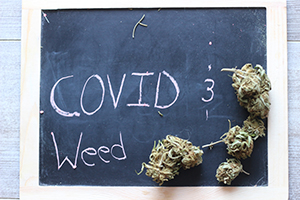 It’s probably one of the most-googled, unproven remedies for COVID-19: could marijuana, hemp, and cannabidiol (CBD) derivatives help combat the virus? As STAT reports, “Kimmel and Colbert cracked jokes. The studies received coverage in outlets from Fox News to The Daily Beast,” but only clinical trials can provide solid answers. The scant early-stage findings, however, have “left researchers and consumer advocates scrambling to warn people that patients shouldn’t be turning to over-the-counter products or recreational marijuana in hopes that it might protect them from COVID-19.” The study suggesting that CBD might inhibit SARS-CoV-2 replication was published in Science Advances earlier this month.
It’s probably one of the most-googled, unproven remedies for COVID-19: could marijuana, hemp, and cannabidiol (CBD) derivatives help combat the virus? As STAT reports, “Kimmel and Colbert cracked jokes. The studies received coverage in outlets from Fox News to The Daily Beast,” but only clinical trials can provide solid answers. The scant early-stage findings, however, have “left researchers and consumer advocates scrambling to warn people that patients shouldn’t be turning to over-the-counter products or recreational marijuana in hopes that it might protect them from COVID-19.” The study suggesting that CBD might inhibit SARS-CoV-2 replication was published in Science Advances earlier this month.
January 24, 2022
 The Omicron surge will likely peak in “most” states by mid-February, US National Institute of Allergy and Infectious Diseases Director Anthony Fauci, MD, told ABC News. “Things are looking good. We don’t want to get overconfident, but they look like they’re going in the right direction right now,” he said, adding that “there may be a bit more pain and suffering with hospitalizations in those areas of the country that have not been fully vaccinated or have not gotten boosters.”
The Omicron surge will likely peak in “most” states by mid-February, US National Institute of Allergy and Infectious Diseases Director Anthony Fauci, MD, told ABC News. “Things are looking good. We don’t want to get overconfident, but they look like they’re going in the right direction right now,” he said, adding that “there may be a bit more pain and suffering with hospitalizations in those areas of the country that have not been fully vaccinated or have not gotten boosters.”
Also expressing some cautious optimism, the World Health Organization (WHO) European Regional Director Hans Kluge, MD, said that given the increasing scope of both prior infections (and the natural immunity they provide) and vaccinations, “Omicron offers plausible hope for stabilization and normalization,” the New York Times reports. WHO Director-General Tedros Adhanom Ghebreyesus, PhD, however, was more circumspect, noting that Omicron is unlikely to be the last variant to make a mark, and cases are still on an upswing in many parts of the world.
Amidst all the headlines about SARS-CoV-2, researchers writing in JAMA Internal Medicine decided to look back at healthcare workers who survived an outbreak of SARS-CoV-1 in China back in 2003, and whether that offered any protection against COVID-19. As their research letter explains, antibody levels among healthcare workers vaccinated with the Oxford/AstraZeneca (ChAdOx1) vaccine indicate that individuals who survived SARS nearly two decades ago had higher anti–SARS-CoV-2-spike receptor-binding domain antibody levels than those who hadn’t had that earlier infection, and those who’d been vaccinated with either one or two doses, “despite being older and having a longer interval between vaccination and antibody level measurement.” The findings should serve as a reminder that “immunological memory is the key point to gaining insights into the likelihood of the durability of protective immunity against SARS-CoV-2 infection,” while also making a strong case for vaccines that target both the SARS-CoV-1 and SARS-CoV-2 spike glycoproteins.
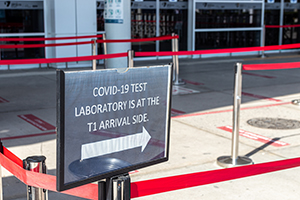 British Prime Minister Boris Johnson announced today that the mandatory tests for vaccinated travelers coming to England or those returning home will soon be scrapped. The change—which applies only to England, and not Scotland, Wales, and Northern Ireland, where authorities make their own regulations—will “show that this country is open for business, open for travelers, you will see changes so that people arriving no longer have to take tests if they have been vaccinated, if they have been double vaccinated," Johnson is quoted by the Associated Press.
British Prime Minister Boris Johnson announced today that the mandatory tests for vaccinated travelers coming to England or those returning home will soon be scrapped. The change—which applies only to England, and not Scotland, Wales, and Northern Ireland, where authorities make their own regulations—will “show that this country is open for business, open for travelers, you will see changes so that people arriving no longer have to take tests if they have been vaccinated, if they have been double vaccinated," Johnson is quoted by the Associated Press.
The US Centers for Disease Control and Prevention (CDC) hopes to shift the conversation around vaccination, Director Rochelle Walensky, MD, said during at a White House press briefing last week. “The agency is working to ‘pivot the language’ to make sure that everybody is as up to date with their COVID-19 vaccines as they personally could be, should be, based on when they got their last vaccine,” Becker’s Hospital Review quotes Walensky. “That means if you recently got your second dose, you’re not eligible for a booster, you’re up to date. If you are eligible for a booster and you haven’t gotten it, you’re not up to date and you need to get your booster in order to be up to date.”
Another study of heterologous vaccine dosing is confirming a better immune response as compared with a homologous vaccine series. The RHH-001 trial in Brazil tested a third jab of Janssen’s recombinant adenoviral-vectored vaccine, Pfizer/BioNTech’s mRNA vaccine, or Oxford/AstraZeneca’s recombinant adenoviral-vectored vaccine following two doses of Sinovac’s inactivated whole-virion SARS-CoV-2 vaccine. For all three combinations, “heterologous boosting resulted in more-robust immune responses than homologous boosting and might enhance protection,” the authors conclude in the Lancet.
An analysis of patients discharged from the ICUs of 11 Dutch hospitals after hospitalization for severe COVID-19 points to a disturbing rate of physical, psychological, and cognitive problems 1 year later. Among survivors who completed the survey at 1 year, 74% reported physical symptoms—especially weakened condition, joint stiffness, joint pain, muscle weakness, and myalgia. In addition, 26% reported mental symptoms and 16% reported cognitive problems. Many survivors also reported “work-related problems as a result of the critical illness episode,” the authors add, publishing their full findings in JAMA.
The number of US adults reporting symptoms of serious psychological distress has remained significantly higher throughout the COVID-19 pandemic than in years prior, with symptoms surveyed at four different phases of the pandemic to date. Of the 1,068 US adults 18 years and older, surveyed at four different time points, 12% to 15% reported serious symptoms, compared with rates in the range of 3% to 4% prior to 2020. “At all four time points, the prevalence of serious distress was highest among young adults aged 18 to 29 years, individuals with a household income of less than $35,000, and Hispanic adults,” authors write in JAMA Network Open.
The American Heart Association has released an update to its CPR guidance in order to address the more-contagious Omicron variant. The document is a collaboration with 19 other organizations, including the American Academy of Pediatrics, the American Association for Respiratory Care, the Society of Critical Care Anesthesiologists, and the American Society of Anesthesiologists, and incorporates recent recommendations by the WHO and CDC. Advice from those agencies, along with best practices for resuscitation and access to personal protective equipment, are part of the update, a press release notes. The full document is published in Circulation: Cardiovascular Quality and Outcomes.
 With less than 2 weeks to go before the Olympic Winter Games kick off in Beijing, Chinese authorities have started testing millions of people in the country’s capital, hoping to halt an outbreak detected in the Fengtai district. “Beijing authorities have also announced that anyone who buys or who has bought fever, cough, or certain other medicines in the past 2 weeks will have to take a COVID-19 test within 72 hours,” the AP reports.
With less than 2 weeks to go before the Olympic Winter Games kick off in Beijing, Chinese authorities have started testing millions of people in the country’s capital, hoping to halt an outbreak detected in the Fengtai district. “Beijing authorities have also announced that anyone who buys or who has bought fever, cough, or certain other medicines in the past 2 weeks will have to take a COVID-19 test within 72 hours,” the AP reports.
Todd Neale is the Associate News Editor for TCTMD and a Senior Medical Journalist. He got his start in journalism at …
Read Full Bio


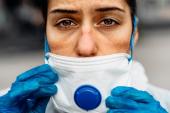

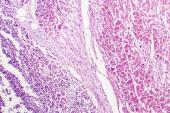
Comments